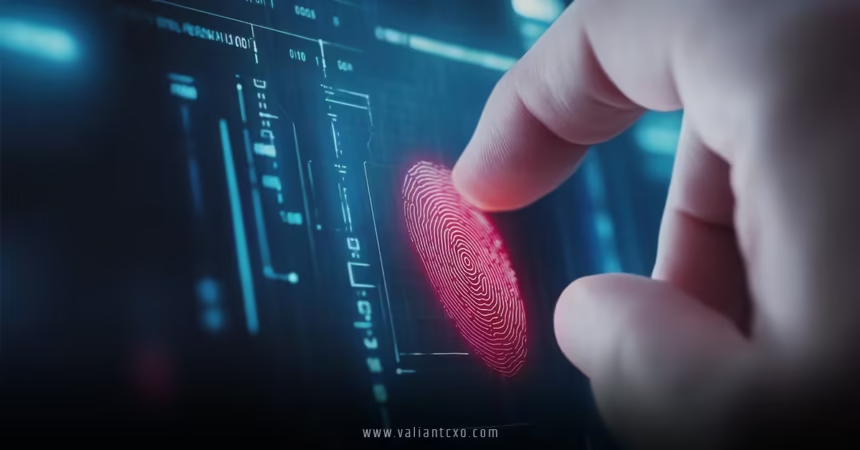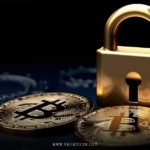The Future of Biometric Security in US Banking is no longer a sci-fi fantasy—it’s knocking on our doors, ready to transform how we access our money. Picture this: no more fumbling with passwords or worrying about stolen cards. Instead, your face, fingerprint, or even the unique rhythm of your heartbeat could unlock your bank account. Sounds futuristic, right? But it’s happening now, and it’s reshaping the US banking industry in ways that are both exciting and a little unnerving. In this article, we’ll dive deep into what The Future of Biometric Security in US Banking looks like, exploring its benefits, challenges, and what it means for you and me.
What Is Biometric Security, and Why Does It Matter?
Let’s start with the basics. Biometric security uses unique physical or behavioral traits—like your fingerprint, iris pattern, or voice—to verify your identity. Unlike passwords, which can be forgotten or hacked, your biometrics are uniquely yours. In the context of US banking, The Future of Biometric Security in US Banking hinges on replacing outdated authentication methods with these cutting-edge systems.
Why does this matter? Well, think about the last time you had to reset a password because you forgot it or got locked out. Frustrating, right? Now imagine a world where you don’t need to remember a string of random characters. Biometrics promise faster, more secure access to your accounts. Plus, with cybercrime costing banks billions annually—according to the FBI, cybercrime losses hit $12.5 billion in 2022—biometric security could be a game-changer in keeping hackers at bay.
How Biometrics Work in Banking
So, how does it actually work? Biometric systems scan your unique traits and convert them into digital data. For example, a fingerprint scanner creates a map of your fingerprint’s ridges and valleys, storing it as a template. When you try to log in, the system compares the scan to the stored template. If it matches, you’re in. Simple, yet incredibly secure.
Banks are already rolling out biometrics like fingerprint scans for mobile apps or facial recognition for ATM access. The Future of Biometric Security in US Banking will likely expand to include more advanced methods, like iris scanning or even behavioral biometrics, which analyze how you type or move your mouse.
The Benefits of Biometric Security in US Banking
The Future of Biometric Security in US Banking is bright, largely because of the advantages it offers. Let’s break down why banks and customers are buzzing about this tech.
Enhanced Security That’s Tough to Crack
Your fingerprint isn’t something you leave lying around (unless you’re in a spy movie). Biometrics are incredibly hard to replicate, making them a fortress against fraud. Unlike a stolen PIN, which a hacker can use from anywhere, your biometric data is tied to your physical presence. This added layer of security is why The Future of Biometric Security in US Banking is so promising—banks can drastically reduce fraud losses.
Convenience That Feels Like Magic
Ever tried logging into your bank account while juggling groceries and a screaming toddler? Biometrics make it effortless. A quick scan of your face or finger, and you’re in. No more typing passwords on a tiny phone screen. This convenience is a big reason why The Future of Biometric Security in US Banking is gaining traction among everyday users.
Faster Transactions, Happier Customers
Time is money, and biometrics save both. Whether you’re withdrawing cash from an ATM or approving a wire transfer, biometric authentication is lightning-fast. Banks like JPMorgan Chase are already experimenting with biometric ATMs, and the results are clear: quicker transactions mean happier customers.
The Challenges Holding Back Biometric Security
But hold on—it’s not all smooth sailing. The Future of Biometric Security in US Banking faces some serious hurdles. Let’s unpack the challenges that could slow its adoption.
Privacy Concerns: Who’s Watching Your Data?
Here’s a question to chew on: If your bank stores your fingerprint, what happens if that data gets hacked? Unlike a password, you can’t change your biometrics. A data breach could be catastrophic, exposing your unique traits to cybercriminals. In 2019, a breach in India’s Aadhaar biometric database exposed the data of over 1 billion people, raising red flags about storage security. The Future of Biometric Security in US Banking will need to address these privacy concerns head-on to win public trust.
Costly Implementation for Banks
Switching to biometric systems isn’t cheap. Banks need to invest in new hardware, software, and training. Smaller banks, in particular, might struggle to afford the upgrade. For The Future of Biometric Security in US Banking to become universal, banks will need cost-effective solutions or government incentives to offset expenses.
Not Foolproof: The Risk of Errors
Biometrics aren’t perfect. Ever tried unlocking your phone with wet fingers? Sometimes, scanners fail to recognize legitimate users (false negatives) or, worse, let in the wrong person (false positives). While rare, these errors could erode trust in The Future of Biometric Security in US Banking if not addressed.
How Biometrics Are Already Changing US Banking
The Future of Biometric Security in US Banking isn’t just a distant dream—it’s happening now. Major banks like Wells Fargo and Bank of America are rolling out biometric features in their mobile apps. Fingerprint and facial recognition are becoming standard for logging in or authorizing payments. Some ATMs even let you withdraw cash with a palm scan.
But it’s not just about logging in. Behavioral biometrics are quietly revolutionizing fraud detection. By analyzing how you interact with your banking app—your typing speed, swipe patterns, or even how you hold your phone—banks can spot suspicious activity in real-time. It’s like having a digital guard dog that knows your every move.
Case Study: Bank of America’s Biometric Push
Bank of America has been a pioneer in adopting biometrics. Their mobile app now supports fingerprint and facial recognition for over 40 million users. According to Bank of America’s 2023 annual report, nearly 70% of their customers use biometric authentication, cutting down on fraud attempts by 30%. This is a glimpse into The Future of Biometric Security in US Banking—where convenience and security go hand in hand.
The Role of Regulation in Shaping Biometric Security
The Future of Biometric Security in US Banking won’t unfold in a vacuum. Regulations will play a massive role in how fast and how far this tech spreads. In the US, there’s no federal law specifically governing biometric data, but states like Illinois have stepped up with laws like the Biometric Information Privacy Act (BIPA). BIPA requires companies to get consent before collecting biometric data and to disclose how it’s stored and used.
Banks will need to navigate this patchwork of state laws while ensuring compliance. If The Future of Biometric Security in US Banking is to thrive, we’ll likely see more unified regulations to protect consumers without stifling innovation.
Global Inspiration: What the US Can Learn
Other countries are ahead of the curve. In India, biometric ATMs are widespread, and in China, facial recognition is used for everything from payments to account verification. The US can borrow ideas from these markets to accelerate The Future of Biometric Security in US Banking, but it’ll need to balance innovation with privacy protections.
Emerging Trends in Biometric Security
So, what’s next for The Future of Biometric Security in US Banking? The horizon is packed with exciting possibilities. Here are a few trends to watch.
Multimodal Biometrics: Double the Security
Why rely on one biometric when you can use two? Multimodal biometrics combine multiple traits—like your face and voice—for extra security. It’s like locking your account with two keys instead of one. Banks are starting to explore this to make The Future of Biometric Security in US Banking even more robust.
Behavioral Biometrics: The Invisible Shield
Behavioral biometrics are the next frontier. By analyzing patterns like your typing rhythm or how you navigate an app, banks can detect fraud without you even noticing. It’s like having a security guard who knows you better than you know yourself.
Biometric Cards: The Future of Plastic
Imagine a credit card with a built-in fingerprint scanner. These biometric cards are already in trials, and they could redefine how we pay. No PIN, no signature—just your finger. This is a big part of The Future of Biometric Security in US Banking, blending physical and digital security.
The Customer’s Role in Embracing Biometrics
Let’s not kid ourselves—technology alone won’t make The Future of Biometric Security in US Banking a reality. Customers need to buy in. That means overcoming skepticism about privacy and getting comfortable with new systems. Banks can help by being transparent about how biometric data is stored and protected. Education campaigns, clear privacy policies, and opt-in consent will be key to building trust.
Think of it like adopting smartphones a decade ago. At first, people were wary, but once they saw the benefits, they jumped on board. The same could happen with biometrics if banks play their cards right.
Conclusion: The Future Is Bright, but It’s Up to Us
The Future of Biometric Security in US Banking is a thrilling mix of promise and potential pitfalls. From lightning-fast transactions to ironclad security, biometrics could revolutionize how we bank. But challenges like privacy concerns, high costs, and technical glitches need to be tackled head-on. By learning from global examples, investing in cutting-edge tech, and earning customer trust, banks can make The Future of Biometric Security in US Banking a reality we all embrace. So, are you ready to ditch your password and let your fingerprint do the talking? The future is closer than you think—let’s shape it wisely.
FAQs
1. What makes The Future of Biometric Security in US Banking more secure than passwords?
Biometrics rely on unique physical or behavioral traits, like fingerprints or voice patterns, which are nearly impossible to replicate. Unlike passwords, which can be guessed or stolen, biometrics are tied to you, making them a stronger defense against fraud.
2. Are there privacy risks with biometric security in banking?
Yes, privacy is a concern. If biometric data is hacked, it can’t be changed like a password. Banks must use robust encryption and comply with laws like BIPA to protect your data in The Future of Biometric Security in US Banking.
3. How are US banks already using biometric security?
Many banks, like Bank of America, offer fingerprint and facial recognition in their mobile apps. Some ATMs use palm scans, and behavioral biometrics are used to detect fraud, paving the way for The Future of Biometric Security in US Banking.
4. Will biometric security replace passwords entirely?
Not entirely, but it’s likely to become the primary method. The Future of Biometric Security in US Banking will probably use biometrics alongside other methods, like PINs, for extra layers of protection.
5. How can customers prepare for The Future of Biometric Security in US Banking?
Stay informed about your bank’s biometric offerings and read their privacy policies. Opt in only if you trust their security measures, and advocate for transparency to ensure your data is safe.
For More Updates !! : valiantcxo.com


